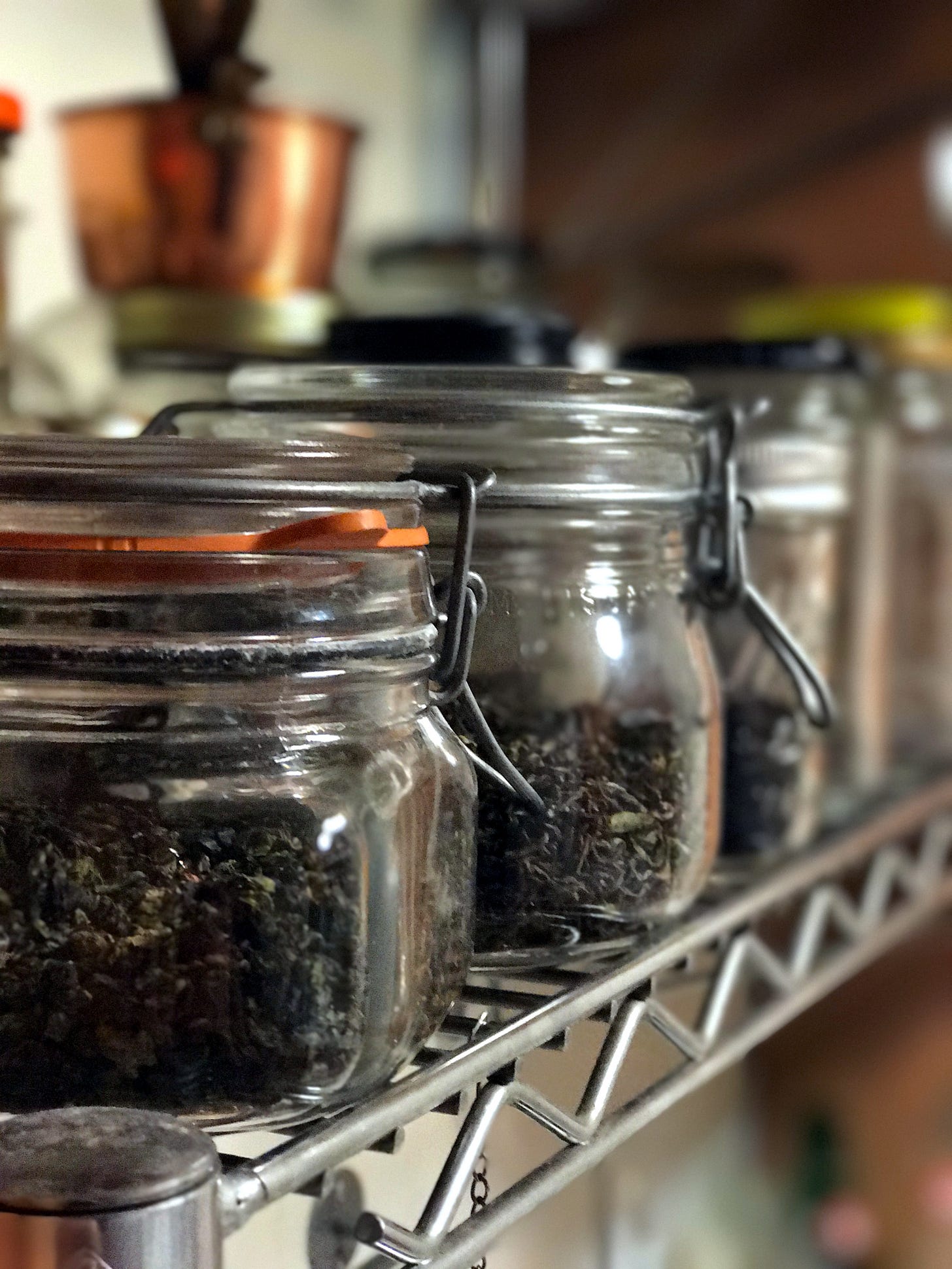11 Easy Ways to Avoid Consuming Microplastics
Disposal isn't the only problem with plastic
Although worrying about microplastics—plastic fibers or bits smaller than 5 millimeters—shouldn’t keep you awake at night (we have so many other choices!), we need to be aware of the health risks, especially since federal regulating bodies charged with putting public safety above corporate profits will now have more difficulty doing so thanks to the Supreme Court’s overturning of the Chevron decision. (Register to vote here.)
The macro problem, very briefly
Microplastics have infiltrated the air we breathe, the food we eat, the water we drink and the dust we inhale. With them come unwanted guests: known endocrine-disrupting chemicals such as bisphenols, phthalates, flame retardants and per- and polyfluorinated substances (PFAS), also referred to as forever chemicals because they persist in our bodies and in the environment, well, basically forever. (Go here for more on PFAS.)
While the effects of microplastics on human health remain (mostly) unknown, a three-year study published in early 2024 found that among a group of over 200 surgery patients, those with microplastics (or smaller nanoplastics) lodged in a main artery were 4.5 times more likely to suffer a heart attack, stroke or death within 34 months of their surgeries than the patients free of microplastics in their arteries.
Health concerns aside, I simply don’t want my money supporting the fossil fuel industry, which has not only created this mess (plastic is made mostly of fossil fuels) but plans to exacerbate it by expanding plastic production in order to unload their products as we adopt renewable energy. If nothing else, my cutting plastic serves as a small act of rebellion.
How to minimize your exposure to microplastics
Unfortunately, we can’t possibly stuff the genie back into the PET bottle. However, the following strategies can reduce exposure to microplastics.
1. When possible, eat home cooked meals consisting of fresh produce and other whole foods. Ultra processing can expose food to plastic along its various manufacturing steps: tubing, conveyor belts or workers handling the food with polyvinyl chloride gloves. These foods are almost always packaged in plastic as well, unlike vegetables and fruit that grow their own protective casings.
Yes, cooking requires more work than opening bags and boxes but eating fewer ultra-processed foods not only reduces your exposure to microplastics, it also can improve your diet, save money and result in tastier meals. If you find cooking daunting, keep your dishes simple. As Julia Child said, “You don't have to cook fancy or complicated masterpieces—just good food from fresh ingredients.”
2. Drink loose-leaf tea. Many tea bags contain plastic in the bag’s sealant. In other tea bags, the paper itself contains plastic. And “silky” synthetic bags are completely made of plastic, just one of which can shed billions of microplastics into a cup of tea.
3. Don’t heat food in plastic. Plastic, food and heat make a terrible trio as heat can release microplastics—and cause chemicals to leach into food. When heating food in the microwave, choose glass or ceramic, never plastic. Avoid boil-in-the-plastic-bag frozen entrées or anything else that you must cook sheathed in plastic. Even if the marketing on these packages screams “NOW BPA FREE!” that claim doesn’t address microplastics and besides, the plastic may contain a different bisphenol that is just as bad. Skip the sous vide too.
4. Store food in glass, ceramic and metal food containers. If you don’t have many plastic-free containers, start hoarding jars and ask friends and family for theirs. You’ll not only avoid microplastics, you’ll also see at a glance what food you have on hand, which helps prevent food (and money) from going to waste. If you buy food in single-use plastic containers, do not reuse them for food storage. Over time, these plastic containers will shed more microplastics. But you could store screws or safety pins or buttons or whatever in them instead.
5. Order drinks in real mugs at cafés. A plastic lining inside throw-away cups prevents drinks from leaking all over you. That impermeable liner also releases microplastics into your beverage. If your café refuses to serve you in anything but a throwaway cup, you can probably find a more business savvy café that wants to keep its doors open and so actually listens to its customers.
6. Avoid bottled water and other beverages packaged in plastic. The water that private-equity-firm-owned bottlers steal and sell back to us can contain 240,000 pieces of micro- and nano-plastics per liter-sized plastic bottle.
7. Chop on wooden cutting boards. No surprise that as a knife slices through an onion and slams into the plastic surface below, the blade releases bits of plastic, as explained in this study. Stick with wood and you won’t have to read boring studies.
8. Vacuum, mop and dust often. You’ll breathe in less microplastic. Bonus: Your home will look good!
9. Opt for natural fibers. When you next choose carpets or curtains or clothing, select natural fibers as much as possible. You will breathe in fewer microplastics and when you wash your clothes, fewer microplastics will wind up in our waterways.
10. Build community. In 2018, my friends and I started making simple, reusable produce bags out of donated fabric that might otherwise go to landfill. So far, we’ve handed out 3,994 bags, mostly at our farmers’ market. These simple reusables reduce plastic pollution and start conversations about it. If you’d like to launch a similar group, learn how in a free webinar on Friday, July 19th at 10am PT/1pm ET. Register here.
11. Support policies that curb plastic pollution.
The ambitious UN Global Plastics Treaty is like the Paris Accord for plastic pollution. Go here to tell the US government to take a stronger stance on it.
The Break Free From Plastic Pollution Act would curb plastic pollution domestically. Go here to support it.
Help stop Formosa from building a mega-polluting petrochemical plant in St. James Parish, Louisiana—aka Cancer Alley—an area burdened with petrochemical plants and soaring cancer rates. Sign the petition here.
Let’s pretend you don’t care about microplastics (but you don’t fool me!), what’s the downside to adopting some of these strategies?





Great ideas, another one I would add is boiling water in a metal kettle
You are a trustworthy guide on this topic—thank you so much!